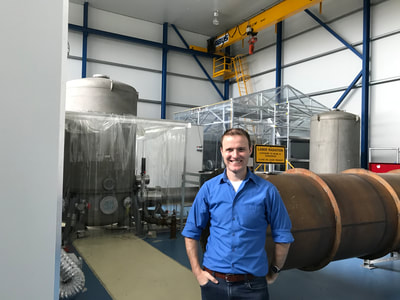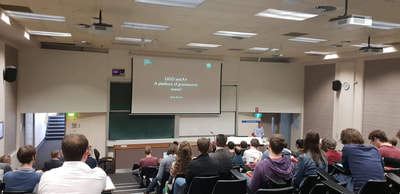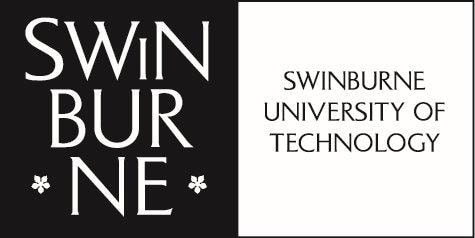|
Dr Aidan Brooks (LIGO Laboratory Caltech) visited Australia in Aug-27 through Sep-21 2018 to visit the University of Adelaide (UoA) with additional short trips to UWA, ANU and Monash. The focus of the trip was divided into three main research areas with different time horizons:
Advanced LIGO support Extensive discussions were held with Dan and Peter on how Adelaide can continue to support the Hartmann sensor (HWS) code for LIGO. I also discussed the cavity eigenmode modulation (CEM) technique for cavity mode-matching and alignment that Alexei has developed. A+ preparation A+ is a medium-scale upgrade to Advanced LIGO (aLIGO) that will introduce frequency dependent squeezing and new coatings to the aLIGO test masses. Much of the trip was focused on development of adaptive optics, designed at Adelaide, for use in A+. Successful deployment of these optics will significantly reduce the complexity of the A+ adaptive optics system and could potentially reduce the budget for this system by $200k or more. LIGO-Voyager The third generation of LIGO will be called LIGO-Voyager and will require, amongst other large-scale upgrades, a 2-micron laser source so Seb showed me the one that UoA are developing. Work at other OzGrav Nodes At UWA, I had long discussions with Zhao and gave some input on their plans to develop technologies for Voyager. The Gingin facility is potentially the only site in the next few years to have a suspended Fabry-Perot cavity with silicon optics and two micron lasers and thus could be valuable for testing. I spent two days at ANU (overlapping with Rana Adhikari during that time). We provided input on the OzGrav proposal to build a high-frequency GW detector in Australia, and Bram and I discussed the requirements for two-stage tip-tilt.
0 Comments
|
|
- Home
- About
-
Our People
- Chief Investigators
- Partner Investigators
- Associate Investigators
- Postdocs and Students >
- Professional & Outreach staff
- Governance Advisory Committee
- Scientific Advisory Committee
- Executive Committee
- Equity & Diversity Committee
- Early Career Researcher Committee
- Professional Development Committee
- Research Translation Committee
- OzGrav Alumni
- Research Themes
- Education and Outreach
- Events
- News/Media
- Contact Us
- Home
- About
-
Our People
- Chief Investigators
- Partner Investigators
- Associate Investigators
- Postdocs and Students >
- Professional & Outreach staff
- Governance Advisory Committee
- Scientific Advisory Committee
- Executive Committee
- Equity & Diversity Committee
- Early Career Researcher Committee
- Professional Development Committee
- Research Translation Committee
- OzGrav Alumni
- Research Themes
- Education and Outreach
- Events
- News/Media
- Contact Us



 RSS Feed
RSS Feed








